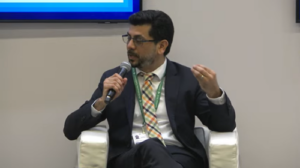As World Strives to Conserve 30% of Nature, Local Communities Are Creating Innovative Finance Tools
Equitable, durable funding mechanisms are critical for achieving COP15 goals
Blog
Nations this week adopted a historic agreement that aims to conserve 30% of all of Earth’s lands and waters by 2030, part of a global movement known as “30x30.”
To meet this ambitious goal, a crucial question must be answered: How do we pay for it?
The global biodiversity framework, passed in Montreal at the 15th Conference of the Parties (COP15) to the United Nations (UN) Convention on Biological Diversity, calls for developed countries to provide billions of dollars of funding to support developing nations in achieving the 30x30 targets. But, as many have pointed out, a massive financing gap remains.
To help bridge that gap, countries across the globe are innovating and creating financial mechanisms to support durable and effective ocean conservation work in their nations’ waters.
The Blue Nature Alliance convened leaders from several of those countries during COP15 for a panel discussion on conservation finance. The event, “Making it Meaningful: Advancing equitable ocean conservation through sustainable financing,” was moderated by Tom Dillon, Senior Vice President and Head of Environment for Alliance Core Partner, The Pew Charitable Trusts.

During the panel, speakers — who brought local, national, and global perspectives and represented projects in Africa, the Caribbean, the Pacific, and Latin America — highlighted ways their communities are collaborating with governments, NGOs, and businesses to create innovative financing solutions that fund ocean conservation projects. They underscored the importance of Indigenous peoples and local communities driving those solutions to ensure that marine work is equitable and durable over time.
A recording of the event provides details about the sustainable finance mechanisms developed by each community. Some highlights:
 “When we go out there to look for sustainable finance, we have to always remember our target audience—who in country is going to use that resource? We want to make the link between getting the resources from donors and partners and getting it to the people on the ground. We are ensuring the people on the ground actually doing the conservation work are receiving the resources that we are attracting from the outside.”
“When we go out there to look for sustainable finance, we have to always remember our target audience—who in country is going to use that resource? We want to make the link between getting the resources from donors and partners and getting it to the people on the ground. We are ensuring the people on the ground actually doing the conservation work are receiving the resources that we are attracting from the outside.”
— Marie-May Jeremie, Chief Executive Officer of the Seychelles Conservation and Climate Adaptation Trust

“We cannot have sustainable financing without being inclusive and equitable. When I’ve seen sustainable finance initiatives being developed in the past, we think about inclusion and equitability often as an afterthought. This cannot continue to happen—it has to be part of the design process. We have to do it with intention.”
— Yabanex Batista, Deputy Head of the UN Global Team for the Global Fund for Coral Reefs

“It’s really about trying to ensure that our ocean is sustainably used, conserved into the future to support the next generations just as we have benefitted from that. Growing up in a small country, the ocean is our bank—it provided our food, our education, everything. So we have to make sure that our next generation is cloaked with that same privilege.”
— Coral Pasisi, President of Tofia Niue

“We have on one hand the public resources … and on the other hand, we have the collaboration with the private sector, with donors, with local communities. And the equitable dimension is in both because we need to work not only with the global boards, with the big NGOs, but also with the local authorities and local communities. That’s the key in this.”
— Diego Flores, Head of the Department of Protected Areas in Chile’s Ministry of the Environment